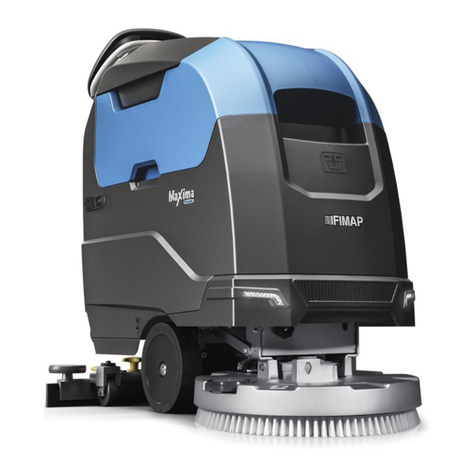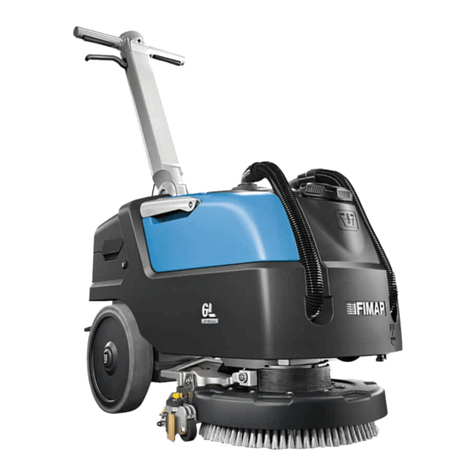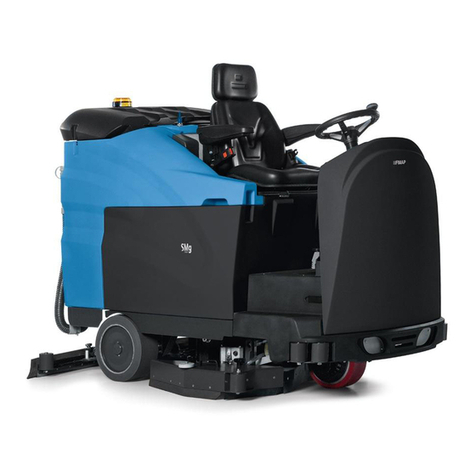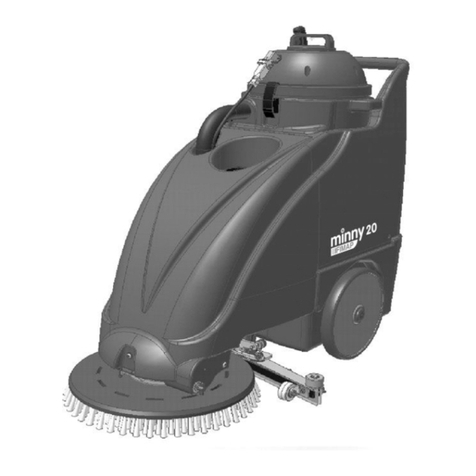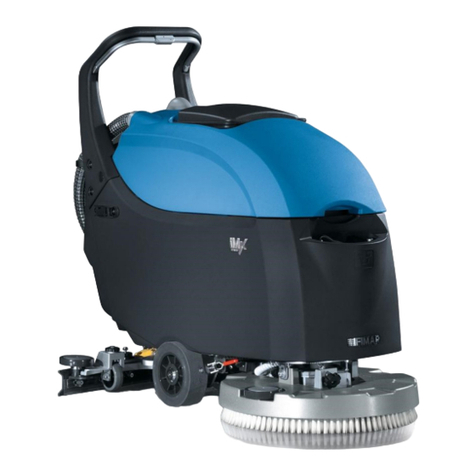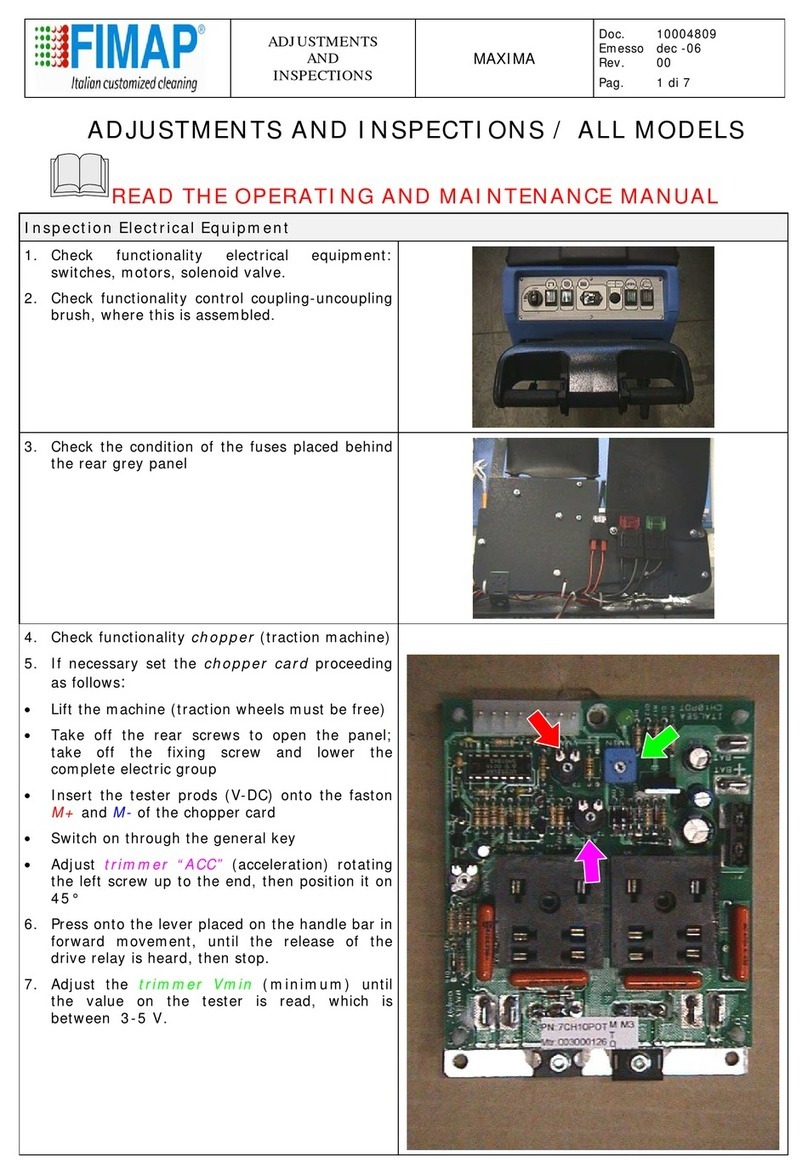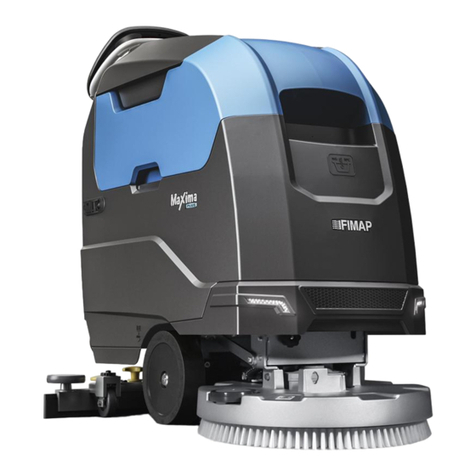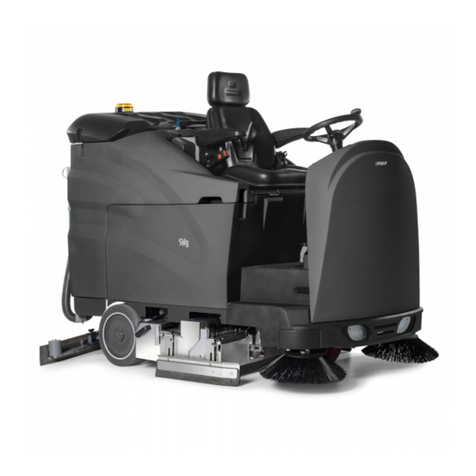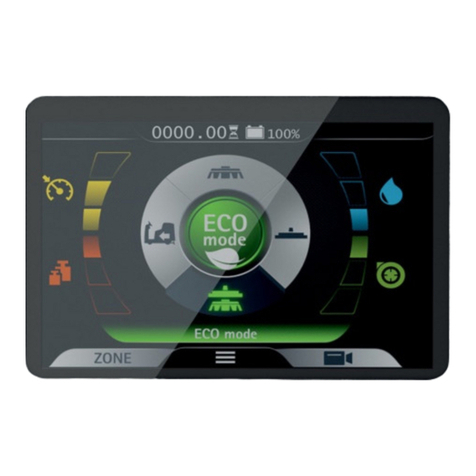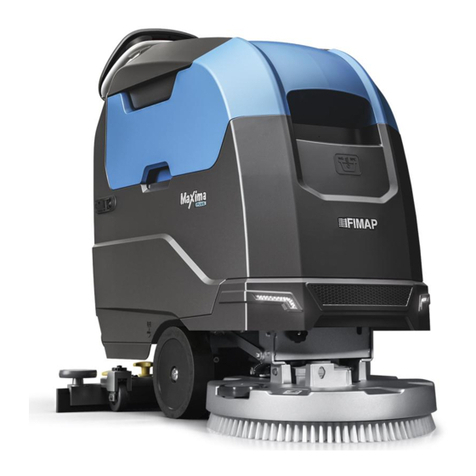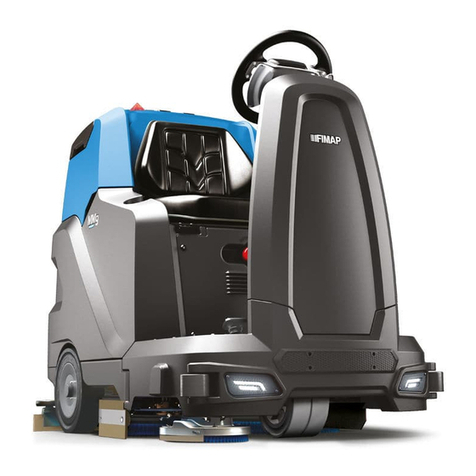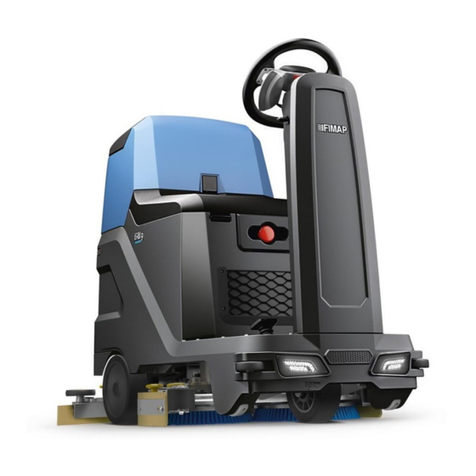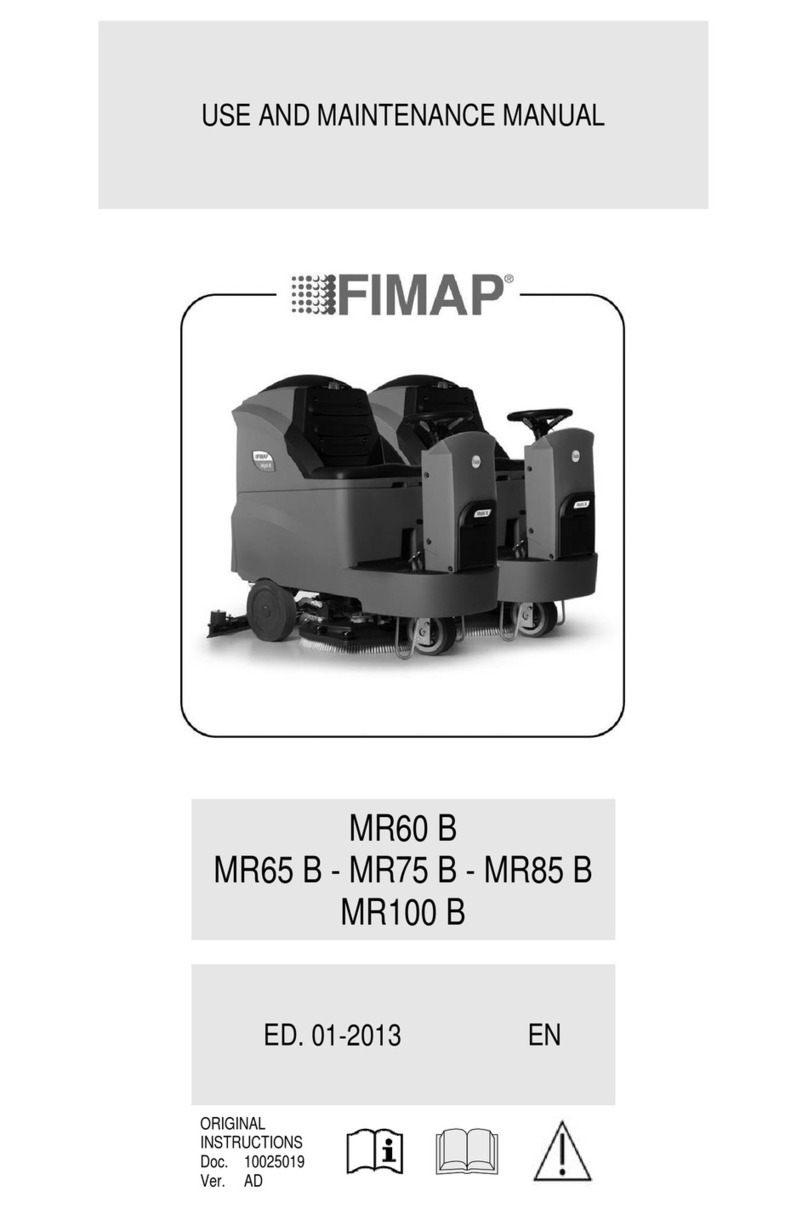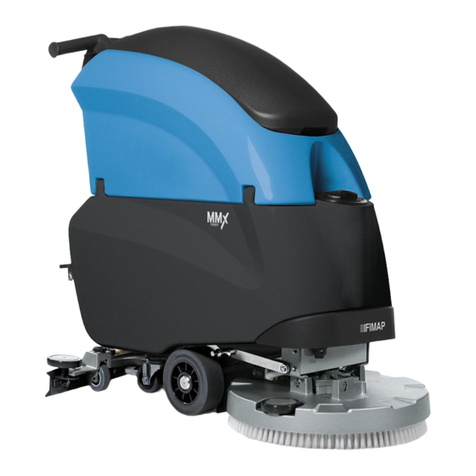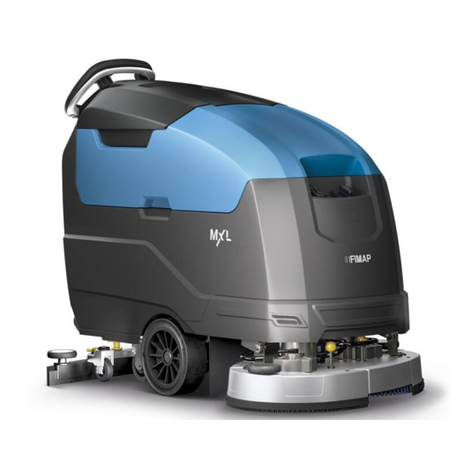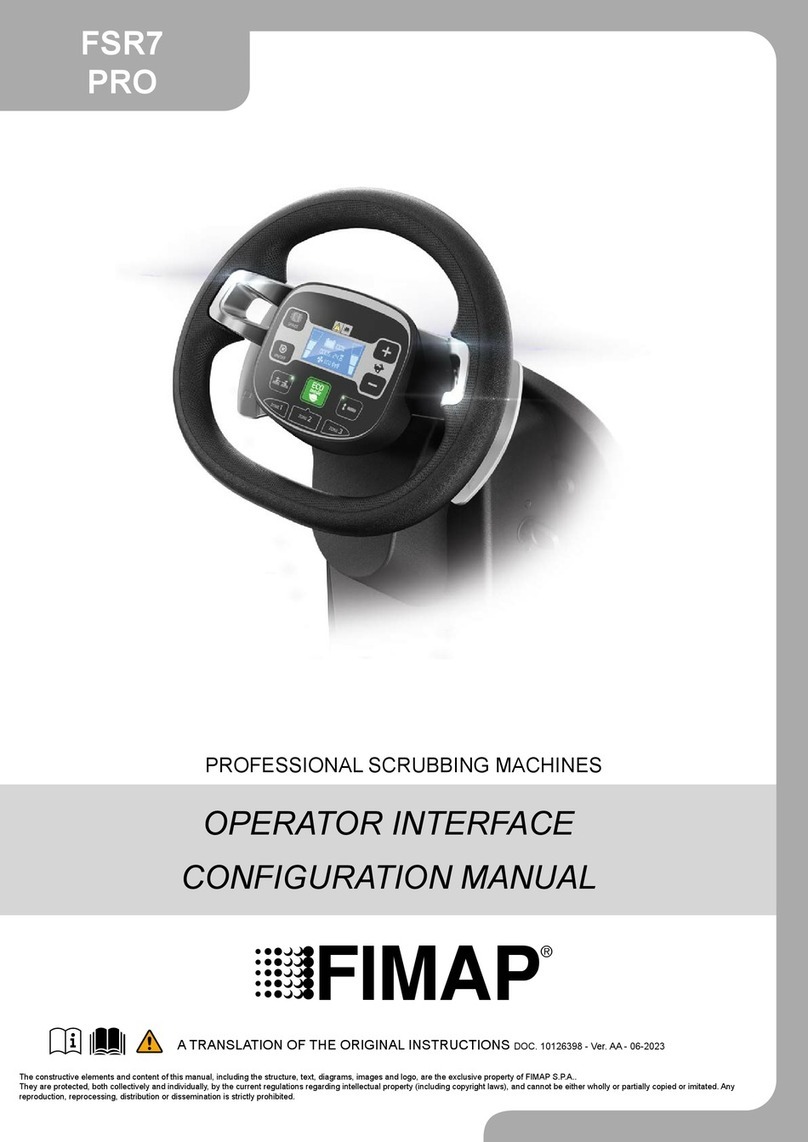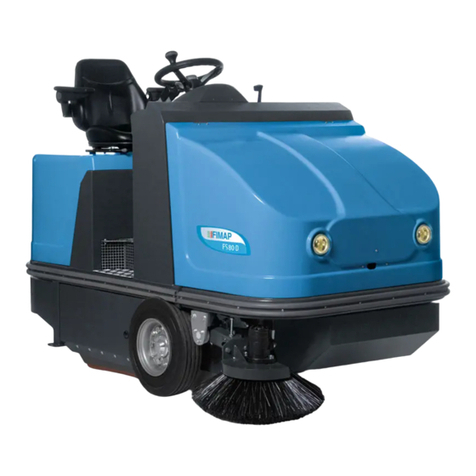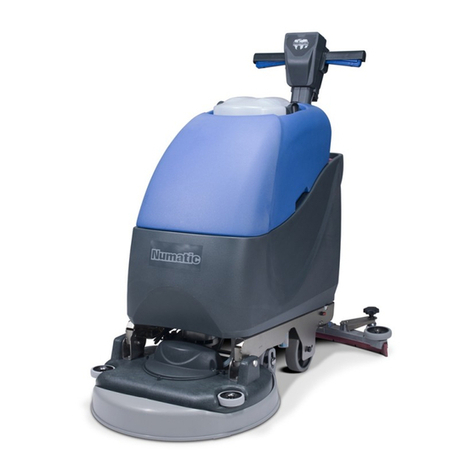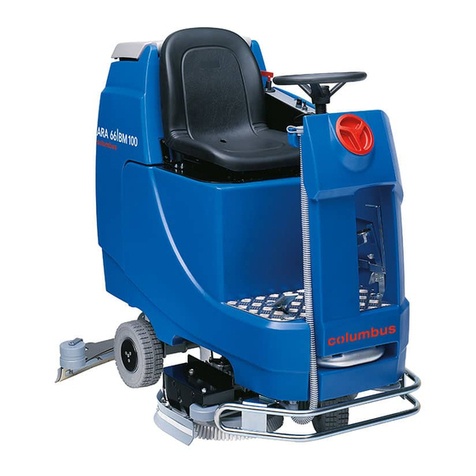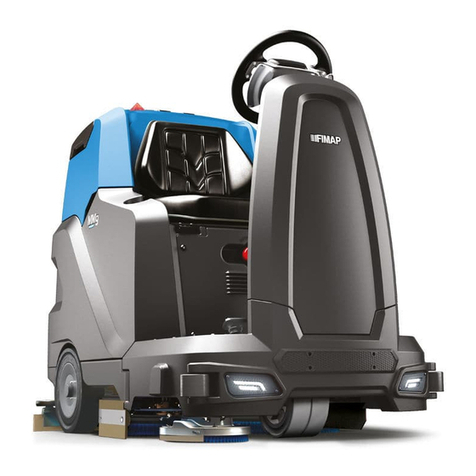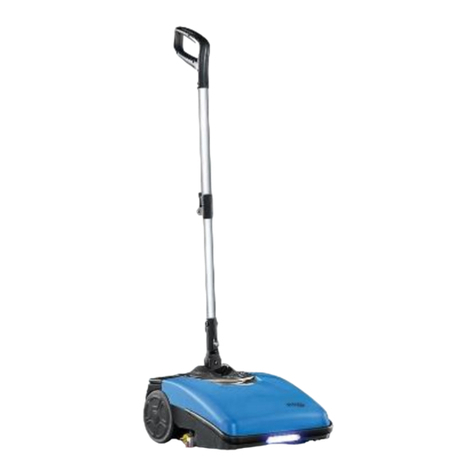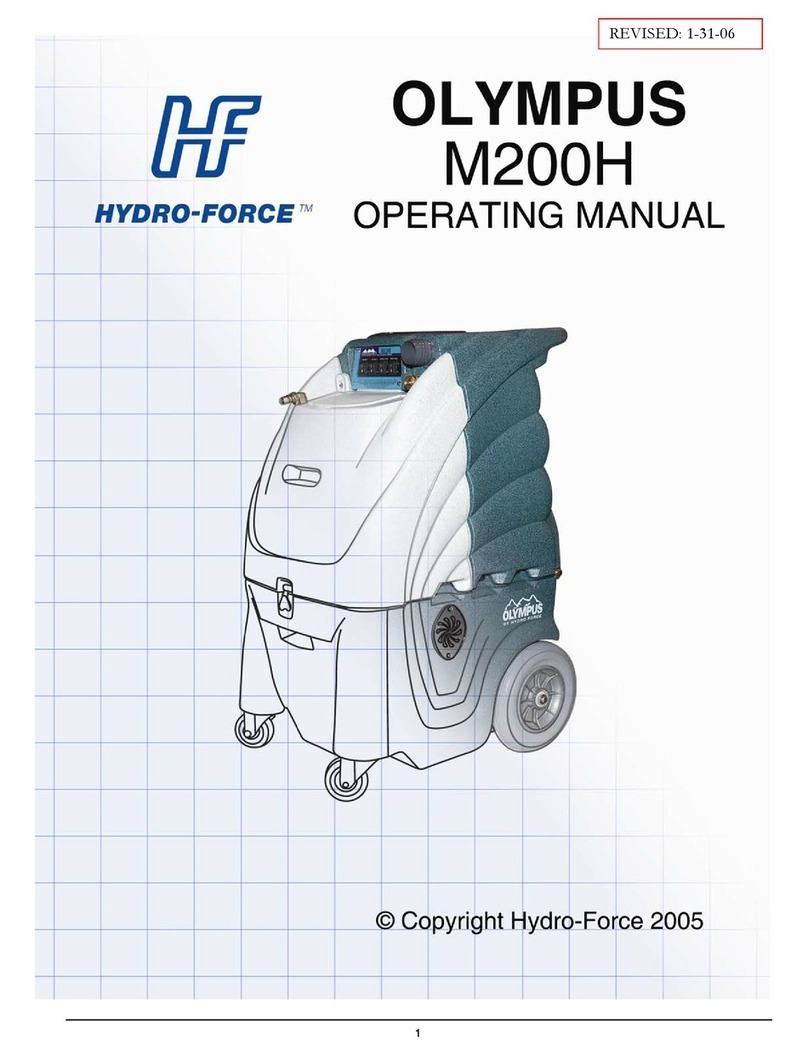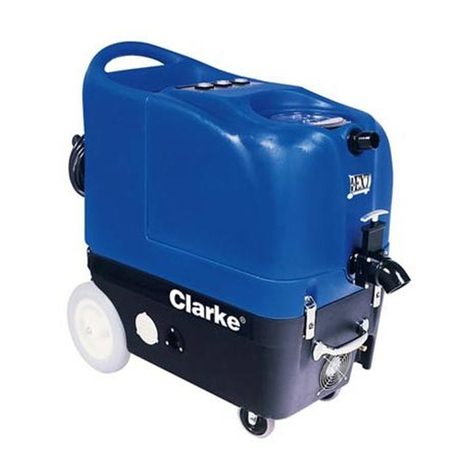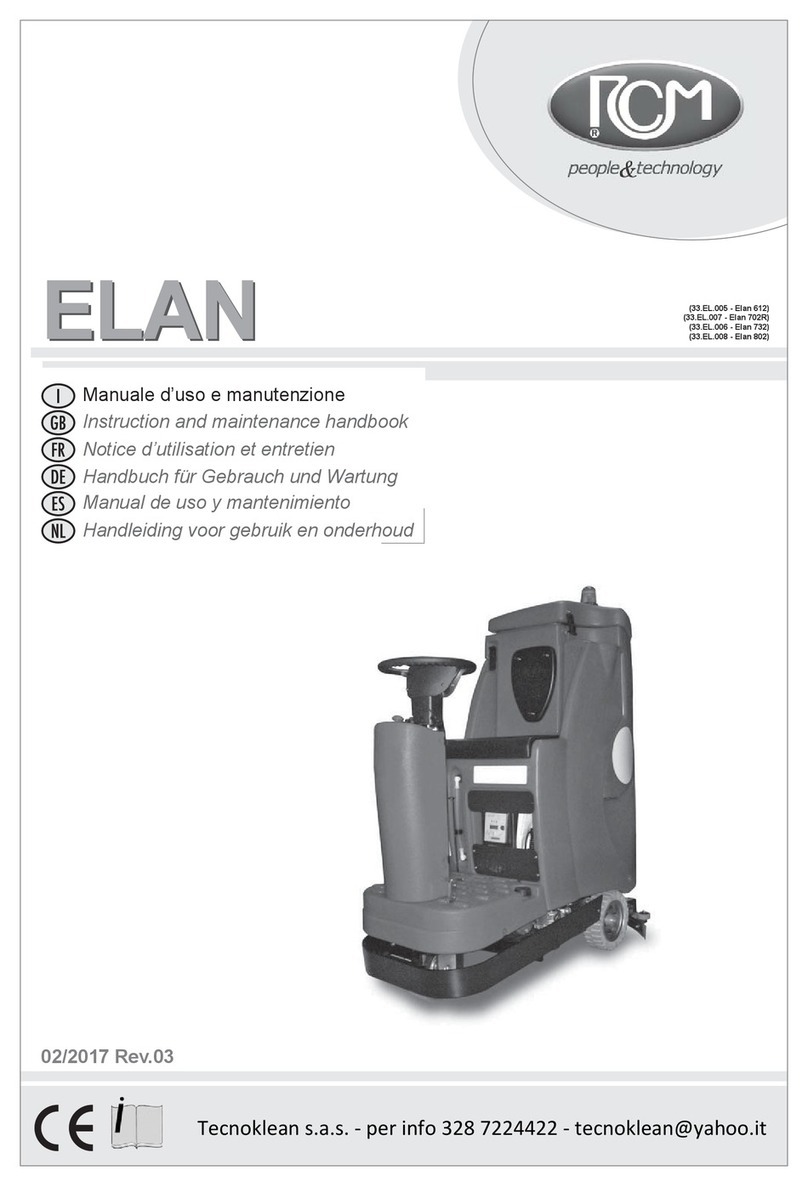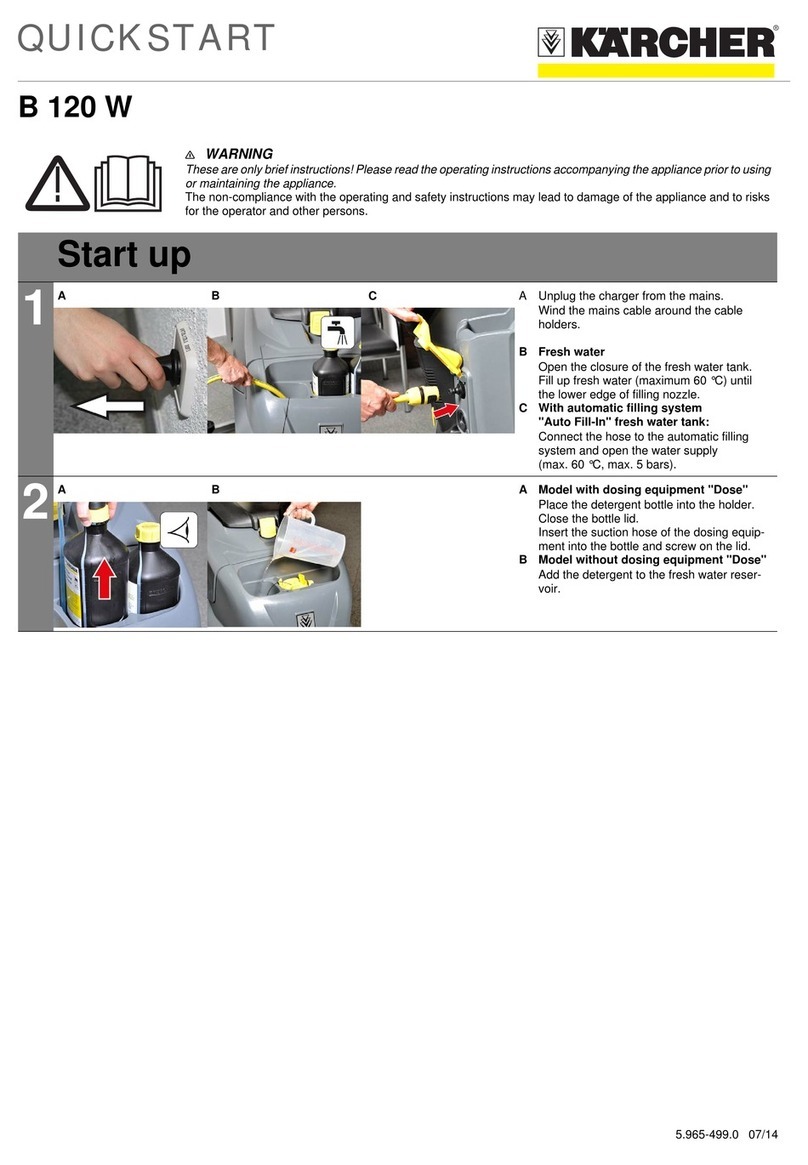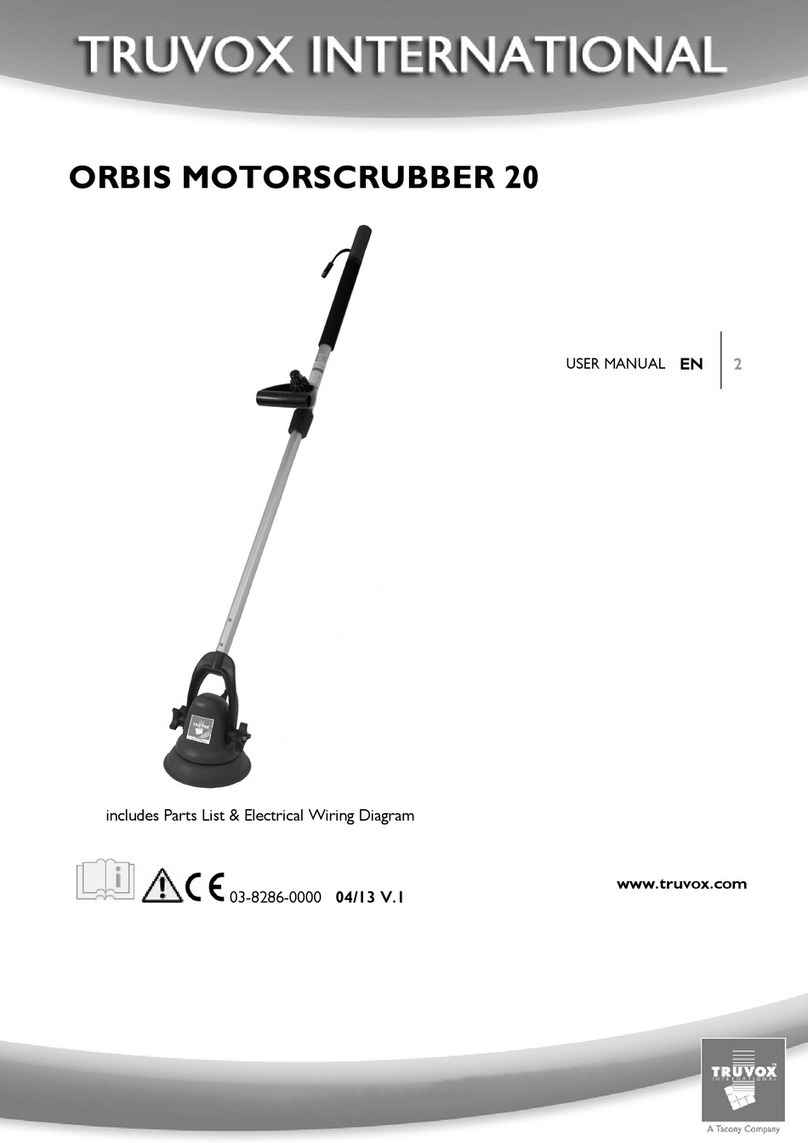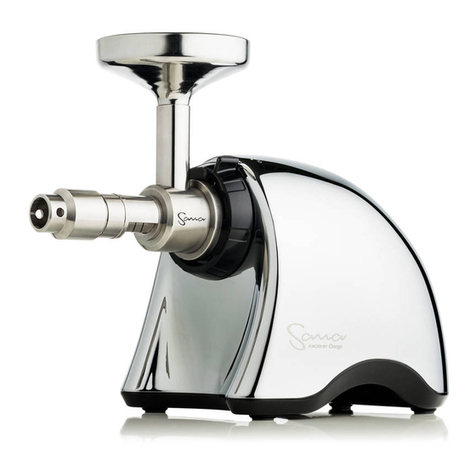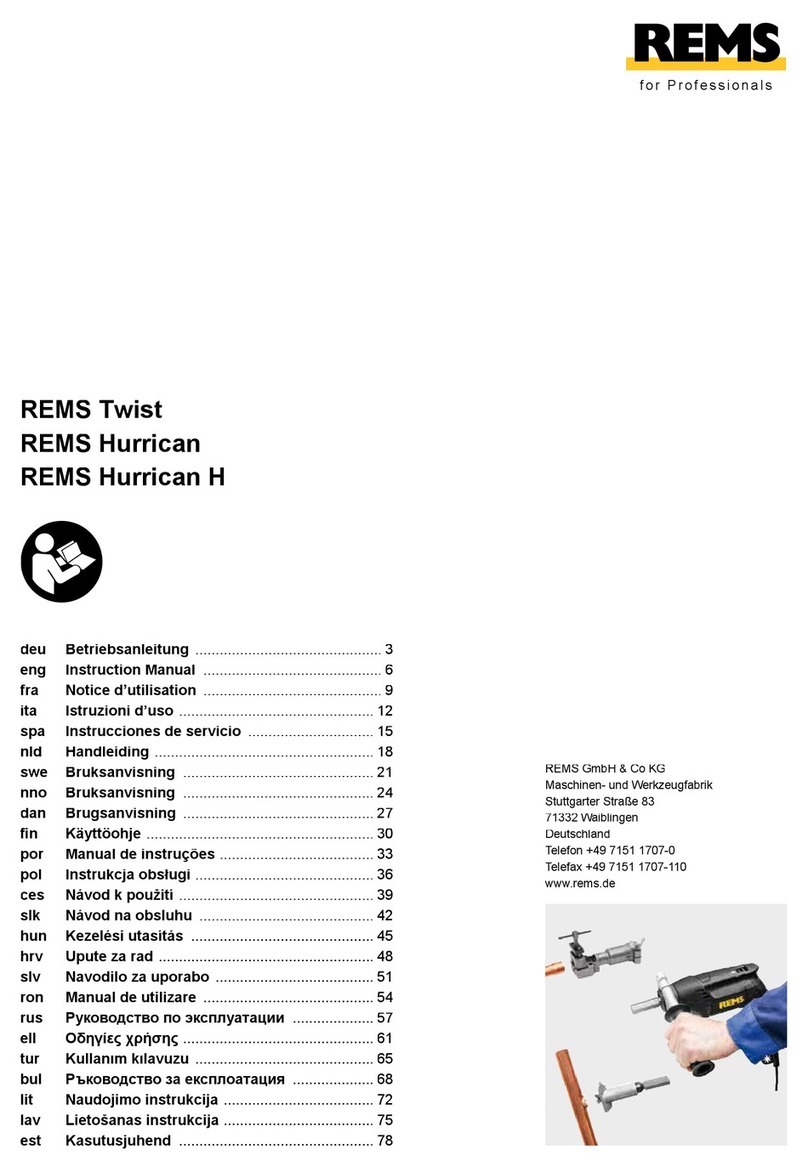
3
PURPOSE AND CONTENT OF THE MANUAL
TARGET GROUP
STORING THE USE AND MAINTENANCE MANUAL
ON DELIVERY OF THE APPLIANCE
INTRODUCTORY COMMENT
The aim of this manual is to provide customers with all the information
needed to use the appliance in the safest, most appropriate and
most autonomous way. It includes information concerning technical
aspects, safety, operation, appliance downtime, maintenance, spare
parts and scrapping. Operators and qualied technicians must read
This manual is aimed at operators and qualied technicians
responsible for appliance maintenance. Operators must not perform
operations that should be carried out by qualied technicians. FIMAP
The Use and Maintenance Manual must be stored in its special
pouch close to the appliance, protected from liquids and anything
When the machine is delivered to the customer, an immediate
check must be performed to ensure all the material mentioned in
the shipping documents has been received, in addition to verifying
that the equipment has not been damaged during transportation. If
Any type of equipment can only work properly and effectively if used
correctly and kept in full working order by performing the maintenance
operations described in the attached documentation. You should
therefore read this instruction manual carefully, consulting it again
if issues arise while using the machine. If necessary, remember that
the instructions in this manual carefully before carrying out any
operation on the appliance. If in doubt about the correct interpretation
of instructions, contact your nearest Customer Service Centre to
obtain the necessary clarications.
SpA cannot be held liable for damages resulting from failure to
comply with this prohibition.
else that could compromise its legibility.
this is the case, the carrier must ascertain the extent of the damage
at once, informing our customer service ofce. It is only by prompt
action of this type that the missing material can be obtained, and
compensation for damage successfully claimed.
our assistance service (organised in collaboration with our dealers)
is always available for advice or direct intervention.
IDENTIFICATION DATA
For technical assistance or to request replacement parts, always
give the model, the version and the serial number (written on the
TECHNICAL DESCRIPTION
INTENDED USE
SAFETY
SERIAL NUMBER PLATE
The FIMOP is a scrubbing machine that cleans a wide range of
ooring and dirt types by means of the mechanical action of the
discoidal brush and the chemical action of a water-detergent
solution. As it advances, it collects the dirt that has been removed
This scrubbing machine was designed and built for the cleaning
(scrubbing and drying) of smooth, compact ooring in the
commercial, residential and industrial sectors by a qualied operator
in proven safety conditions. The scrubbing machine is not suitable
for cleaning rugs or carpets. The appliance is only suitable for use in
indoor - or at least covered - areas.
Operator cooperation is paramount for accident prevention. No
accident prevention programme can be effective without the full
co-operation of the operator who is directly responsible for machine
operation. The majority of occupational accidents that happen both
in the workplace or whilst moving are caused by failure to respect
The serial number plate is located inside the device on the
underside of the front housing, and indicates the general appliance
characteristics (in particular, the serial number). The serial number is
a very important piece of information and should always be provided
together with any request for assistance or when purchasing spare
parts.
ATTENTION: the appliance is not suitable for use in the rain,
or under jets of water.
IT IS FORBIDDEN to use the appliance for picking up dangerous
dusts or inammable liquids in places with an explosive atmosphere. In
addition, it is not suitable as a means of transport for people or objects.
the most basic safety rules. An attentive, careful operator is most
effective guarantee against accidents and is fundamental in order to
implement any prevention programme.
and the detergent solution that has not been absorbed by the oor.
The appliance must only be used for this purpose.
Designby FIMAP Verona (Italy)
Assembledin FIMAP Verona (Italy)
ViaInvalidi del Lavoro, 1 S. Maria di Zevio - Verona - Italy
relevant plate).
